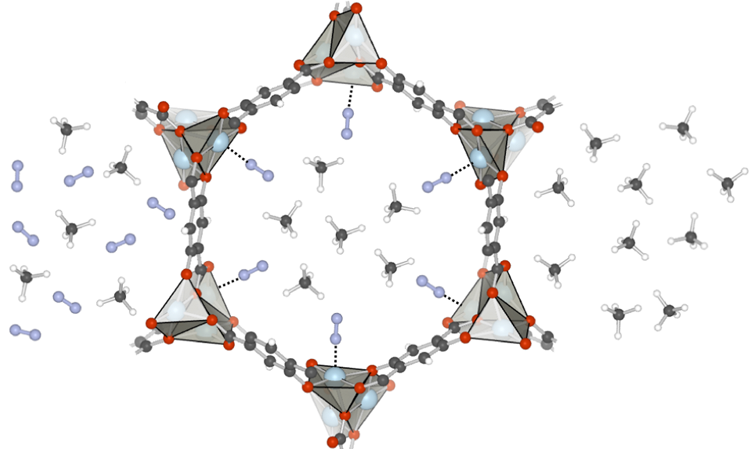

Main navigation | Main content
12/18/2013
Recent research from the research group of Professor
Department of Chemistry graduate students Allison Dzubak, William Isley III, and Pragya Verma collaborated with some Berkeley post-doctorates and graduate students in a recent study as part of the activities of the University of Minnesota-based Nanoporous Materials Genome Center.
As a result of this collaboration, they published a paper in the Journal of the American Chemical Society, which reports the prediction of a hypothetical Metal-Organic Framework, V-MOF-74, that could be promising for natural gas separation applications. V-MOF-74 presents improved back bonding with N2, which would allow for the favorable separation of N2 from CH4.
According to the abstract for the paper: "Gas separations with porous materials are economically important and provide a unique challenge to fundamental materials design, as adsorbent properties can be altered to achieve selective gas adsorption. Metal-organic frameworks represent a rapidly expanding new class of porous adsorbents with a large range of possibilities for designing materials with desired functionalities. Given the large number of possible frame-work structures, quantum mechanical computations can provide useful guidance in prioritizing the synthesis of the most useful materials for a given application. Here, we show that such calculations can predict a new metal-organic framework of potential utility for the separation of dinitrogen from methane, a particularly challenging separation of critical value for utilizing natural gas. An open V(II) site incorporated into a metal-organic frame-work can provide a material with a considerably higher enthalpy of adsorption for dinitrogen than for methane, based on strong selective back bonding with the former but not the latter."
This project was performed by the groups of three Minnesota Chemical Theory Center professors Christopher J. Cramer, Laura Gagliardi, and Donald G. Truhlar.
The paper can be viewed at http://pubs.acs.org/doi/abs/10.1021/ja4102979.
